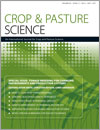Dual-purpose cereals have been important for increasing the flexibility and profitability of mixed farming enterprises in southern Australia, providing winter feed when pasture dry matter production is low, and then recovering to produce grain. A perennial dual-purpose cereal could confer additional economic and environmental benefits. We establish that, at the end of a second growth season, selected perennial cereals were able to achieve up to 10-fold greater below-ground biomass than a resown annual wheat. We review and expand the data on available, diverse, perennial, wheat-derived germplasm, confirming that perenniality is achievable but that further improvements are essential through targeted breeding. Although not yet commercially deployable, the grain yields and dry matter production of the best performing lines approach the benchmarks predicted to achieve profitability. On reviewing the genomic composition of the most promising wheat-derived perennials, we conclude that the best near-term prospect of a productive breeding program for a perennial, wheat-derived cereal will utilise a diploid, perennial donor species, and the most promising one thus far is Thinopyrum elongatum. Furthermore, the breeding should be aimed at complete wheat–Th. elongatum amphiploids, a hybrid synthetic crop analogous to triticale. We advocate the generation of many primary amphiploids involving a diversity of Th. elongatum accessions and a diversity of adapted annual wheat cultivars. Primary perennial amphiploids would be inter-crossed and advanced with heavy, early-generation selection for traits such as semi-dwarf plant height, non-shattering heads, large seed size and good self-fertility, followed by later generation selection for robust perenniality, days to flowering, grain yield, forage yield, stability of grain yield across seasons, and disease resistance.
How to translate text using browser tools
26 February 2014
Progress in developing perennial wheats for grain and grazing
Philip J. Larkin,
Matthew T. Newell,
Richard C. Hayes,
Jesmin Aktar,
Mark R. Norton,
Sergio J. Moroni,
Len J. Wade
ACCESS THE FULL ARTICLE

Crop and Pasture Science
Vol. 65 • No. 11
Oct 2014
Vol. 65 • No. 11
Oct 2014




